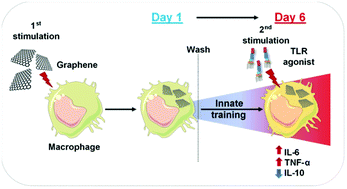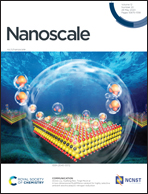Pristine graphene induces innate immune training†
Abstract
Graphene-based materials are of increasing interest for their potential use in biomedical applications. However, there is a need to gain a deeper understanding of how graphene modulates biological responses before moving towards clinical application. Innate immune training is a recently described phenomenon whereby cells of the innate immune system are capable of being programmed to generate an increased non-specific response upon subsequent challenge. This has been well established in the case of certain microbes and microbial products. However, little is known about the capacity of particulate materials, such as pristine graphene (pGr), to promote innate immune training. Here we report for the first time that while stimulation with pGr alone does not directly induce cytokine secretion by bone-marrow derived macrophages (BMDMs), it programs them for enhanced secretion of proinflammatory cytokines (IL-6, TNF-α) and a concomitant decrease in production of the regulatory cytokine, IL-10 after Toll-like receptor (TLR) ligand stimulation. This capacity of pGr to program cells for enhanced inflammatory responses could be overcome if the nanomaterial is incorporated in a collagen matrix. Our findings thus demonstrate the potential of graphene to modulate innate immunity over long timescales and have implications for the design and biomedical use of pGr-based materials.



 Please wait while we load your content...
Please wait while we load your content...